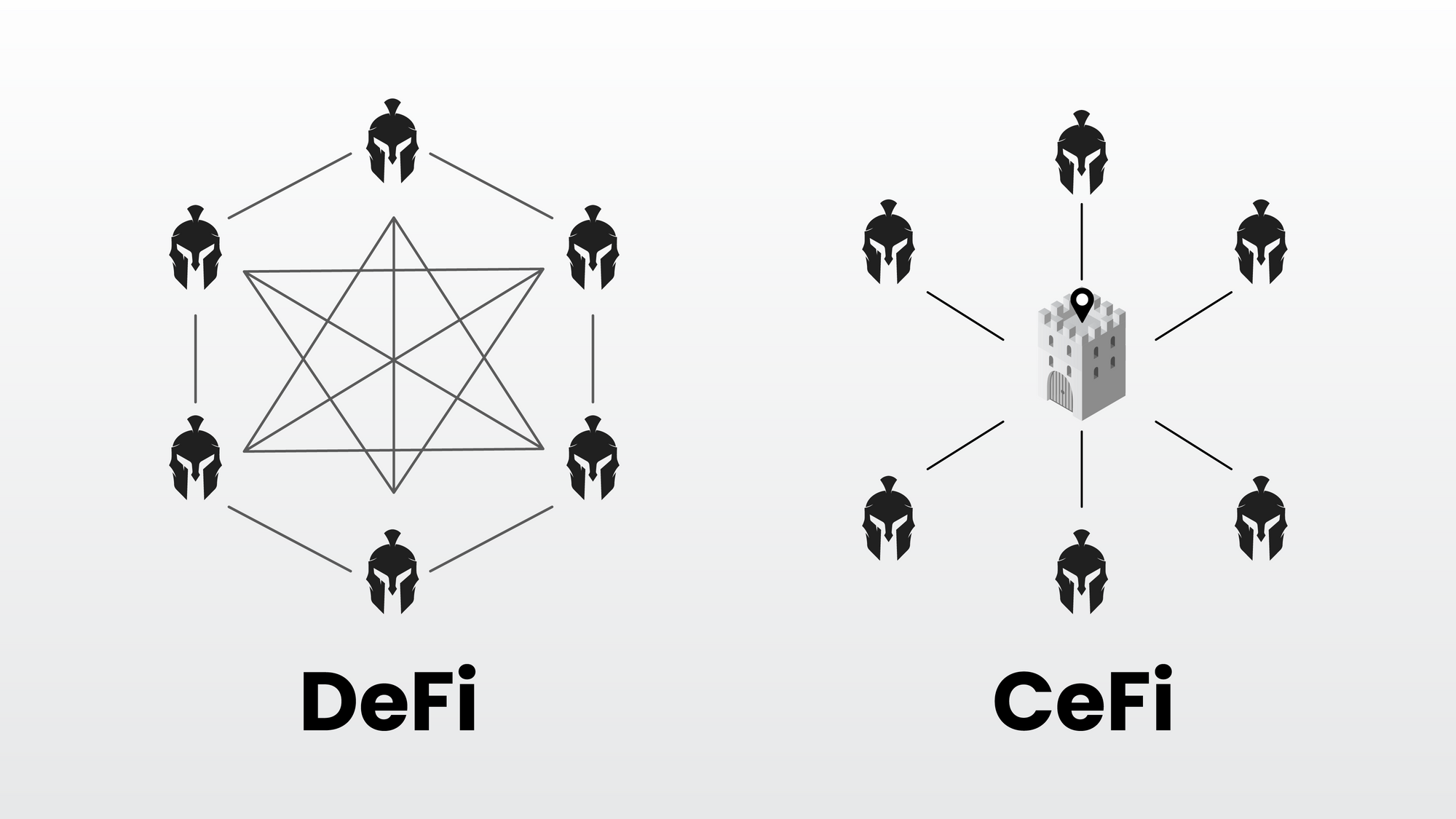Introduction
In the digital age, where trust is often distributed across the vast expanse of the internet, the concept of achieving consensus holds paramount importance. Whether it's validating financial transactions, recording ownership of digital assets, or verifying the integrity of information, consensus is the glue that holds decentralized systems together. At the heart of this intricate web of trust lies the Byzantine Generals' Problem, a timeless riddle that has not only challenged military strategists but has also ignited a revolution in the realm of computer science and distributed systems.
Imagine a group of Byzantine generals encircling a city, each in charge of his own army, and all engaged in seizing the city. The city is strong and only falls when all generals attack at the same time. The generals must reach a consensus on whether to attack or retreat, a decision vital to their collective success. However, there's a catch – some of these generals are traitors, spreading misinformation and sowing discord among their ranks. This is the Byzantine Generals' Problem in its essence: How can a group of actors in a distributed system reach a consensus when a portion of those actors may be unreliable or malicious?
This ancient hypothetical scenario finds its contemporary counterpart in the world of blockchain technology, where the need for decentralized consensus is paramount. Blockchains rely on consensus mechanisms to ensure that transactions are legitimate, records are immutable, and trust is maintained among participants who may be pseudonymous or unknown to each other. It aims to solve the Byzantine Generals’ Problem.
In this article, we delve into the Byzantine Generals' Problem, unraveling its historical origins and exploring its profound implications in the modern era of blockchain technology. We will trace its evolution from a challenging theoretical problem to a practical solution known as Byzantine Fault Tolerance (BFT). Furthermore, we will dissect how blockchain consensus mechanisms, including Proof of Work (PoW), Proof of Stake (PoS), and Practical Byzantine Fault Tolerance (PBFT), have harnessed the essence of BFT to create secure and decentralized networks.
Join us on this journey through the annals of history and the corridors of cutting-edge technology as we uncover the secrets of achieving consensus in a world that demands trust without the need for intermediaries, all rooted in the timeless puzzle of the Byzantine Generals.
Explaining The Byzantine Generals’ Problem
Welcome to the Byzantine Army, where we're about to embark on a crucial mission. Picture this: a mighty enemy city stands before us, and we've surrounded it on all sides. Our best chance of victory lies in attacking together, catching the city off guard. The catch is, if we don't coordinate our attack perfectly, we risk losing the battle.
Imagine we have four armies, each stationed at a different side of the enemy city. To conquer the city, we must attack simultaneously from all directions. If we attack at different times, the city can defend against each army one by one, and our efforts will be in vain.

Now, here's where it gets complicated. The generals in charge of each army must agree on the exact moment to launch the attack. To communicate, they use messengers to send messages to one another. Seems straightforward, right? Not quite.
Sending messages isn't as simple as it sounds. For instance, let's say General Alice decides to attack at midnight, so she sends a message to General Bob. If Bob agrees, he needs to confirm his decision by sending a message back. Then, Alice must acknowledge that she received Bob's confirmation, and so on. This back-and-forth can continue indefinitely.
But there's a twist – the messenger could be intercepted, and the message could be replaced with a fake one, intentionally misleading the generals and causing them to attack at the wrong time, leading to our army's defeat.
To complicate matters further, some of the generals may be traitors, secretly working against the mission and spreading false information. So, the puzzle arises: How can we ensure that all generals agree on whether to attack or retreat, especially when we can't trust all of them?
These challenges represent the essence of the Byzantine Generals' Problem.
Here are a few possible solutions our generals could employ when facing this dilemma:
- Timeout Strategy: Generals could decide to wait for a specific period to receive attack orders. If the deadline passes without receiving orders, they would retreat to the safety of their camp.
- Secret Authentication: Generals might require messengers to provide secret phrases known only to the generals to verify the authenticity of messages. Additionally, they could request official seals from other generals as proof of the message's legitimacy.
- Signal-Based Decision: In a creative twist, each general could send a signal, such as a horseman riding towards the city, as a sign of intent to attack. They could agree to attack only if a certain number of generals initiate the signal.
It's essential to note that solutions to the Byzantine Generals' Problem are more probabilistic than deterministic. However, some key takeaways emerge:
- Increasing the number of messengers can improve the chances of messages reaching all generals.
- Loyal generals who follow agreed-upon orders enhance the plan's execution.
- A higher number of loyal generals implementing orders results in more favorable outcomes.
Now, you might wonder, "Why does this ancient puzzle matter today?" Surprisingly, it's closely related to something we use every day: Money.
You may not notice, but money is a prime example of the Byzantine Generals’ Problem. Money is one such commodity whose value should be same throughout the society, that is everyone should agree upon the value of it.
Money is a prime example of the Byzantine Generals' Problem. It's a commodity whose value should be universally agreed upon. Throughout history, societies have chosen various items, like precious metals or rare goods, as forms of money. Gold, for instance, was widely trusted and accepted worldwide, serving as a solution to the Byzantine Generals' Problem. However, gold had its drawbacks, including issues related to origin, weight, and purity, leading to the rise of centralized authorities, usually governments, to manage and issue money.
In centralized systems, an authority is trusted to provide accurate information and prevent false or fraudulent data from spreading across the network. For instance, in traditional finance, banks are trusted to display clients' balances and transaction histories honestly. If a bank attempts deception, a central bank or government is relied upon to rectify the breach of trust.
However, centralized systems didn't completely solve the Byzantine Generals' Problem; instead, they traded trustlessness for efficiency, often relying on a central authority to maintain integrity. These systems are vulnerable to corruption by the central authority, a risk known as the Single Point of Failure. And this is where decentralization steps in as the solution.

Blockchain was the first to present a proven solution to Byzantine Generals' Problem with Bitcoin’s Proof of Work consensus mechanism. Bitcoin was invented to make the system of money decentralized using blockchain to make money verifiable, counterfeit-resistant, trustless, and separate from a central agency.
Think of it this way, in a centralized system, we put our trust in a single messenger, and believe it will be true. But in a decentralized system, we do not need to trust others, we can verify the truth.
How Blockchain Solves the Byzantine General’s Problem?
As we said before, the solution for the Byzantine Generals' Problem is more probabilistic than deterministic. As a matter of fact, the Byzantine Generals Problem gives the ideal basis for the creation of a fault-tolerant consensus algorithm.
Byzantine Fault Tolerance, or BFT for short, is a concept that comes to the rescue when there's a need for trust in a group of participants, and some of those participants might be unreliable or even malicious. In our generals' scenario, BFT would be the strategy that ensures everyone makes the same decision—attack or retreat—even when some of the generals are traitors.
Think of BFT as the way we keep a group on the same page, even when a few members might want to sabotage the group's efforts. It's like a team-building exercise that helps everyone work together smoothly.
Blockchain is a public, distributed ledger that contains the records of all transactions. All users of the Bitcoin network, known as nodes, agree on which transactions occurred and in what order, they could verify the ownership and create a functioning, trustless money system without the need for a centralized authority.
To do that, blockchains rely heavily on a consensus mechanism to validate transactions. These mechanisms are like the rules of the game that make sure all the players (in this case, nodes or computers in a blockchain network) agree on the state of the game (the blockchain ledger). They ensure that everyone is on the same page, and there's no cheating. Different blockchains can use different consensus mechanisms, each with its own set of rules.
One of the most famous consensus mechanisms is Proof of Work, often abbreviated as PoW. This one is a bit like a race where participants (miners) compete to solve complex mathematical puzzles. The first one to solve it gets the right to add a new block of transactions to the blockchain and is rewarded for their efforts.
Here's the clever part: the puzzles are really hard to solve but easy to check once they're solved. This makes it tough for anyone to cheat. PoW is the consensus mechanism that powers Bitcoin, the very first blockchain.
Another popular consensus mechanism is Proof of Stake or PoS. Imagine a board game where each player has to put some of their tokens as a stake before making a move. The more tokens you stake, the higher the chances you have of being chosen to validate transactions and create new blocks.
Unlike Proof of Work (PoW), which involves solving complex puzzles, PoS operates on the principle of demonstrated financial commitment. Notably, Ethereum, the second-largest blockchain platform, has transitioned from PoW to PoS to enhance its scalability and sustainability.
Practical Byzantine Fault Tolerance (PBFT) is another consensus mechanism that emphasizes efficient decision-making among trusted network participants. In PBFT-based systems, nodes are akin to a consortium of closely associated entities, swiftly reaching consensus through the exchange of messages. Transactions are added to the blockchain if a consensus majority is achieved. PBFT mirrors a well-coordinated team that possesses deep trust in each member's reliability and adherence to a predefined set of rules.
Different blockchains adopt distinct consensus mechanisms, each tailored to engender unanimous agreement within their respective ecosystems. Whether through the resource commitment of PoS, the computational competition of PoW, or the rapid coordination of PBFT, these mechanisms tackle the Byzantine Generals' Problem head-on. By doing so, they fortify blockchains against adversarial forces and uphold their operational reliability.
The Bottom Line
In the digital age, where trust and reliability are the cornerstones of our interconnected world, the Byzantine Generals' Problem emerges as a timeless enigma, bridging the gap between the complexities of distributed systems and the need for consensus. This age-old conundrum, drawn from military strategy, serves as the foundational puzzle in the realm of computer science and underpins the evolution of blockchain technology.
The Byzantine Generals' Problem transcends its ancient origins to become a guiding star for blockchain innovation. From the desolate battlefields of ancient sieges to the bustling digital landscapes of today, Byzantine Fault Tolerance (BFT) has emerged as the beacon of hope, allowing diverse groups of actors to find harmony in achieving undeniable agreement, even in the presence of untrustworthy participants. It is the trust-building mechanism that underpins the security and reliability of our modern digital infrastructure.
Whether in the context of cryptocurrencies, decentralized applications, or critical systems beyond blockchain, the lessons learned from Byzantine Fault Tolerance persist as guiding principles for an interconnected world demanding trust without compromise.
